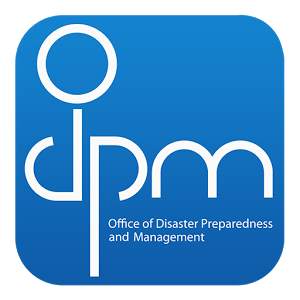Bush fire
What is a Bushfire?
In Trinidad and Tobago, forest fires (also commonly referred to as bushfires or wildfires) are signature events of the dry season. Annually throughout the country, especially along hillsides and roadways, these hazards leave a distinguishable mark on the biological landscape.
Forest fires can be natural occurrences. However, each year, incidences of natural forest fires are augmented by occurrences of fires set deliberately or inadvertently by humans. Out of control ‘slash and burn’ agricultural practices, hunters lighting areas to flush animals out of hiding places and careless tossing of cigarettes out of car windows are common ways in which anthropogenic forest fires can result. It is important to note, however, that in the context of forest fires as hazards, a distinction should be drawn between forest fires and prescribed burns i.e. those fires intentionally set and controlled by environmental experts in order to actively manage a particular habitat.
Prevention and Mitigation
Several steps can be taken to decrease the frequency with which forest fires occur. Additionally, when they do occur, guidelines also exist to ease the extent of the negative impact they may cause.
Strategies that can be used in fire prevention and mitigation include:
- Land Management which entails, but is not limited to:
- Lessening the presence of potential fuels in forested areas by reducing the build up of combustible materials like fallen leaves, branches and trees- based on the types of vegetation that dominate, some areas are more predisposed to fires fueled by organic litter, e.g. oils found in pine tree needles/trees can cause forest stands to burn for days.
- Deliberate creation of fire breaks i.e. strategic areas of land, cleared of vegetation, designed to inhibit the advance of fires- ways of creating fire breaks include grading, ploughing, disking, hoeing or burning. However consideration should be given to biodiversity impact, soil conservation influence and climatic conditions e.g. prevailing wind direction, before fire breaks are created. This is in an effort to promote ecological sustainability and ensure effectiveness of the breaks.
- Providing easier access routes for firefighters to reach and extinguish blazes- in more remote locations, the feasibility of using ‘bambi buckets’, which are airlifted via helicopters, could be explored.
- Building Managementwhich primarily seeks to minimise the siting of buildings in fire prone locations. When they are sited in these areas however, attempts are made to abate likely fire damage by encouraging:
- Use of fire resistant material in construction e.g. concrete bricks as opposed to wood
- Establishment of fire trails around building perimeters
- The practice of storing flammable items such as fuel, wood and paint away from important structures such as dwelling spaces
Public Education which aims to sensitise individuals and communities to the risk of and vulnerability to forest fires and methods of mitigation and prevention. It also seeks to make them aware of who to contact and what to do in the event of a forest fire occurrence. Community based organisations can be vital partners in formulating and executing people-centred early warning systems, which can be essential in alleviating the negative impacts of forest fires.


